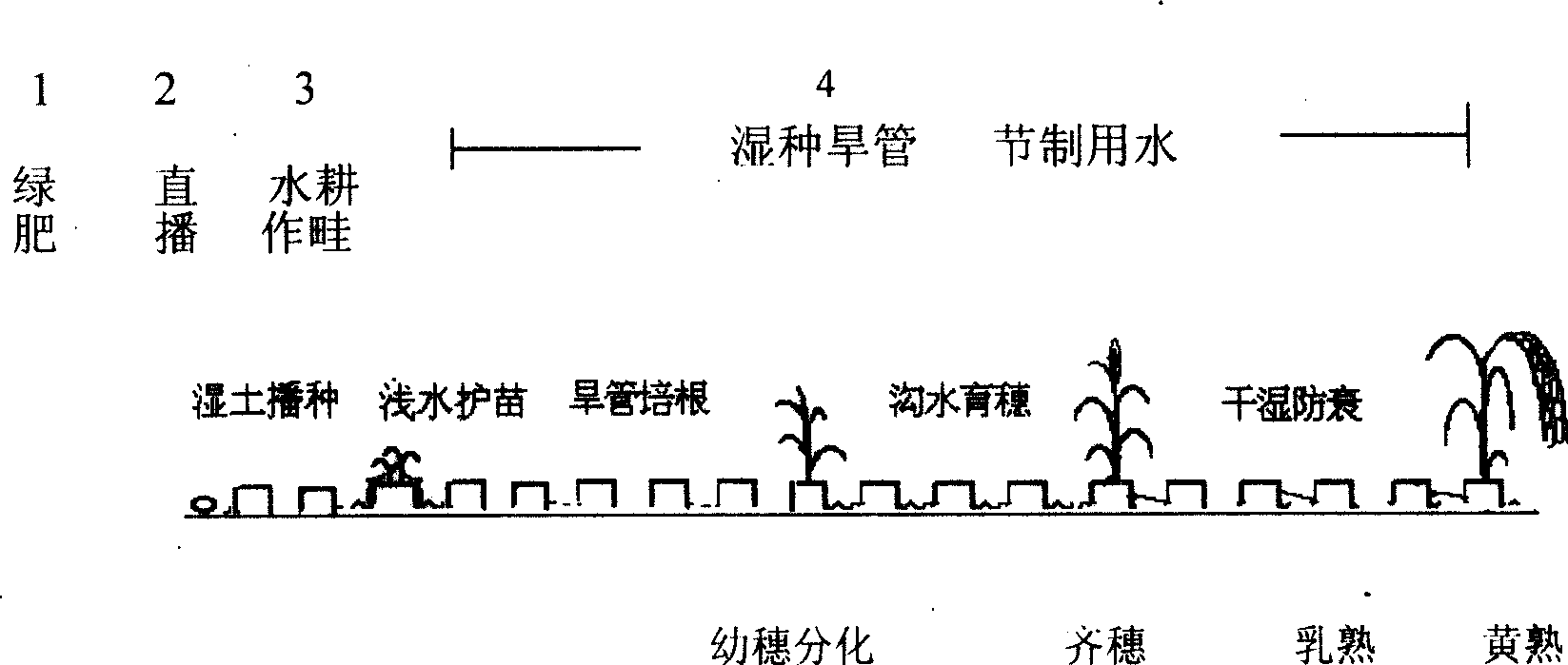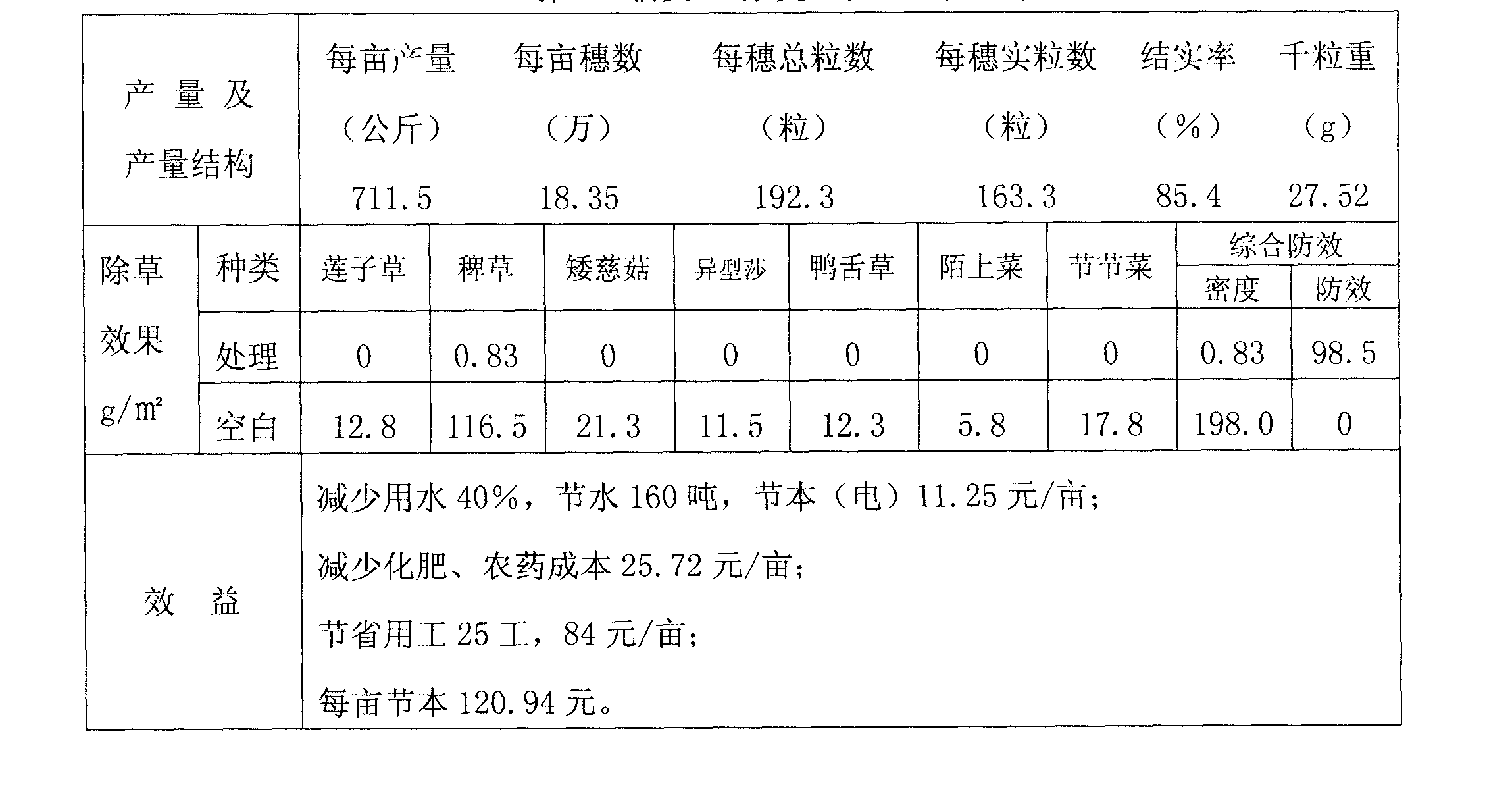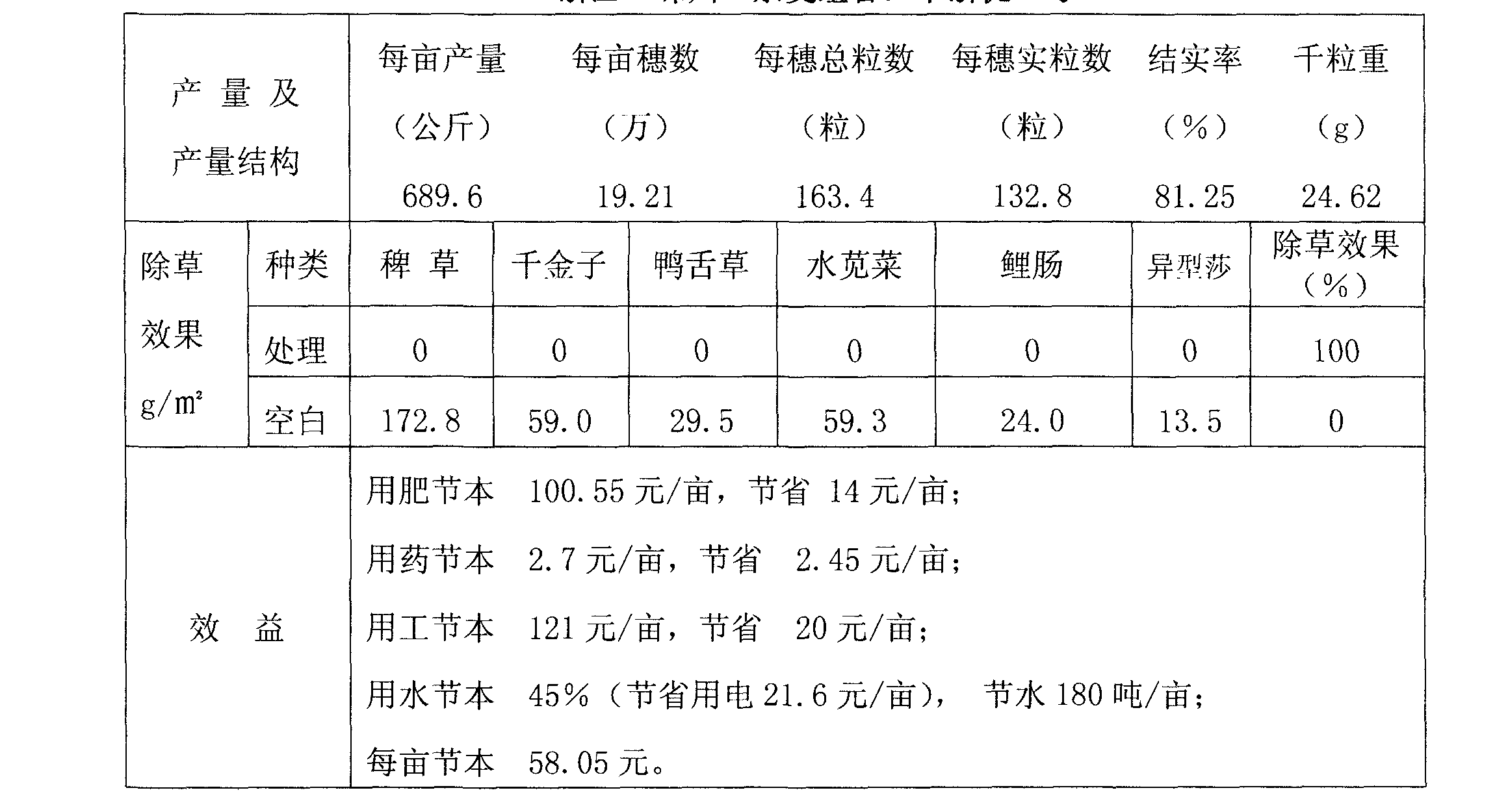Irrigation paddy field 'wheat culture type' rice high yield wet land seeding method
A technology for rice and paddy fields, applied in rice cultivation, botanical equipment and methods, horticulture, etc., can solve the problems of high environmental pollution, destroying soil agricultural productivity, and threatening the quality and safety of rice.
- Summary
- Abstract
- Description
- Claims
- Application Information
AI Technical Summary
Problems solved by technology
Method used
Image
Examples
Embodiment 1
[0036] In 2006, Yuqian Fine Breeding Farm in Lin'an City, Zhejiang Province.
[0037] Variety: hybrid rice Guodao No. 6; area: 86.5 mu.
[0038] On September 28, 2005, 1 kg / mu of milk vetch was sown, and 1 / 3 of the growth of milk vetch was left. From April 25, 2006, it was plowed and soaked in water until May 25.
[0039] On May 28, 100 tons (mu) of water was poured and the land was plowed to make the whole border (zhangqichigou) smooth. Select seeds in salt water, soak seeds to accelerate germination. On June 1, sow seeds on time and quantitatively in wet soil (there is no water in the ditch on the field surface). On June 4, apply 200 grams of aspartate per acre, and on June 12, apply 20 grams of Biansulfuron and 200 milliliters of grass-killing, the first time Fertilize 10 kg / mu urea, the second fertilization is on June 25, urea 15 kg / mu, superphosphate 15 kg / mu, potassium chloride 20 kg / mu. The water is used according to the new irrigation system "wet soil sowing, dry ma...
Embodiment 2
[0045] In 2007, Kong Village, Ganlin Town, Shengzhou City, Zhejiang Province.
[0046] Variety: Hybrid rice Zhongzheyou No. 1; Area: 56.3 mu.
[0047] On September 29, 2006, 1.2 kg / mu of milk vetch was sown. On April 30, 2007, 100 tons / mu of water was irrigated. 2 / 3 of the fresh grass seeds were plowed and cut off. Wide ruler", sow in batches on May 26, and the basic seedlings at the 3-leaf stage after sowing are 18,500 / mu.
[0048] Seeds are selected in salt water (specific gravity 1.13) before sowing, soaked in 'Zao Zhong Ling', the amount of seeds per mu is 1.2 kg, and the buds are sown.
[0049] 3 days after sowing, apply the herbicide 'Gucaobai' 200 g / mu for the first time, and apply weaning fertilizer 10 kg / mu of urea at the 3rd leaf stage, and apply Biansulfuron 20 g / mu+Bensulfuron 200 ml / mu for the second time. Mu, use shallow water to suffocate weeds.
[0050] Fertilization: 25 days after sowing, apply fertilizer, 15 kg of urea, 15 kg of superphosphate, and 20 kg o...
Embodiment 3
[0057] In 2005, Zhejiang·Fuyang·China Rice Research Institute experimental area.
[0058] Variety: Hybrid rice Zhongzheyou No. 1; Area: 24 mu.
[0059] On September 30, 2004, 1.2 kg / mu of milk vetch was sown, and 1 / 3 of the growth of milk vetch was left. From April 23, 2005, it was plowed and soaked in water until May 25. Use 100 tons / mu of irrigation water.
[0060] On May 28, the shallow water plowed the land and the whole border (zhangqichigou) was leveled. Select seeds in salt water, soak seeds to accelerate germination. On June 2, sow seeds on time and quantitatively in wet soil (there is no water in the ditch on the field surface). On June 5, 200 grams of aspartate per mu was applied, and on June 15, 20 grams of Biansulfuron and 200 milliliters of Biansulfuron were applied. The first time Apply weaning fertilizer 10 kg / mu urea, and apply tiller fertilizer for the second time on June 25, urea 15 kg / mu, superphosphate 15 kg / mu, potassium chloride 20 kg / mu. The water sl...
PUM
 Login to View More
Login to View More Abstract
Description
Claims
Application Information
 Login to View More
Login to View More - R&D
- Intellectual Property
- Life Sciences
- Materials
- Tech Scout
- Unparalleled Data Quality
- Higher Quality Content
- 60% Fewer Hallucinations
Browse by: Latest US Patents, China's latest patents, Technical Efficacy Thesaurus, Application Domain, Technology Topic, Popular Technical Reports.
© 2025 PatSnap. All rights reserved.Legal|Privacy policy|Modern Slavery Act Transparency Statement|Sitemap|About US| Contact US: help@patsnap.com



